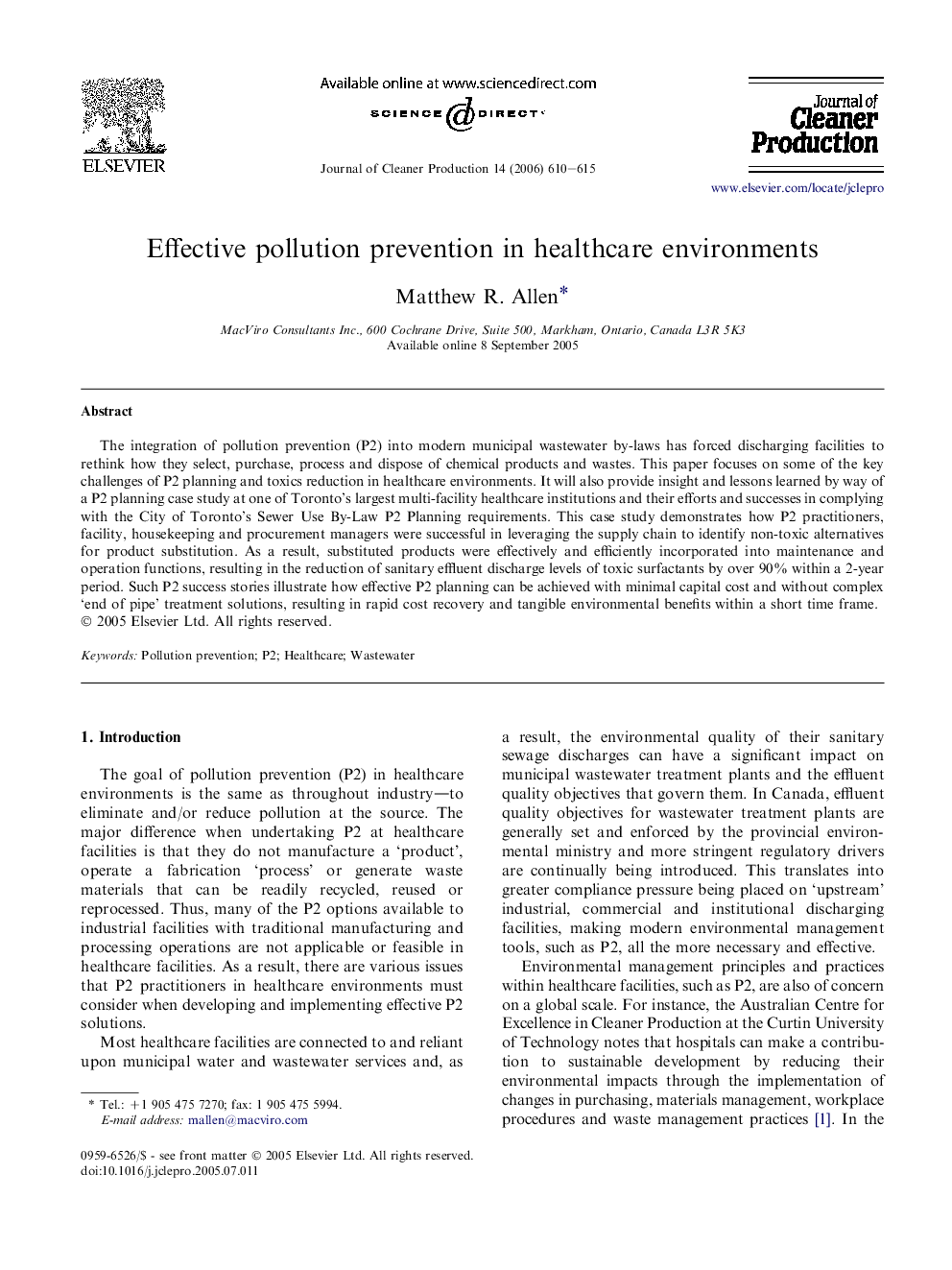| Article ID | Journal | Published Year | Pages | File Type |
|---|---|---|---|---|
| 1747448 | Journal of Cleaner Production | 2006 | 6 Pages |
The integration of pollution prevention (P2) into modern municipal wastewater by-laws has forced discharging facilities to rethink how they select, purchase, process and dispose of chemical products and wastes. This paper focuses on some of the key challenges of P2 planning and toxics reduction in healthcare environments. It will also provide insight and lessons learned by way of a P2 planning case study at one of Toronto's largest multi-facility healthcare institutions and their efforts and successes in complying with the City of Toronto's Sewer Use By-Law P2 Planning requirements. This case study demonstrates how P2 practitioners, facility, housekeeping and procurement managers were successful in leveraging the supply chain to identify non-toxic alternatives for product substitution. As a result, substituted products were effectively and efficiently incorporated into maintenance and operation functions, resulting in the reduction of sanitary effluent discharge levels of toxic surfactants by over 90% within a 2-year period. Such P2 success stories illustrate how effective P2 planning can be achieved with minimal capital cost and without complex ‘end of pipe’ treatment solutions, resulting in rapid cost recovery and tangible environmental benefits within a short time frame.
